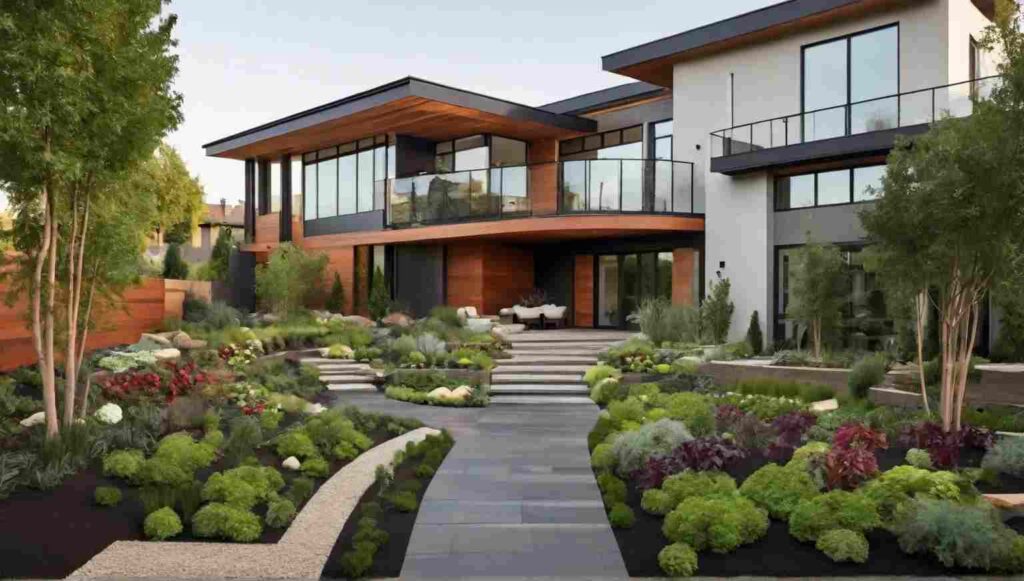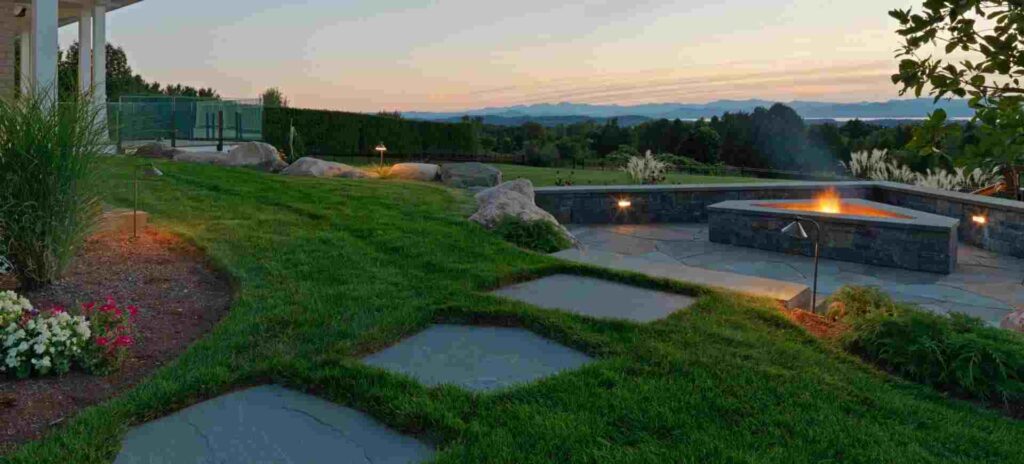Designing a landscape can be an exciting journey, turning outdoor spaces into beautiful and functional areas. The process typically begins with understanding your needs and preferences. So, Liberty Heritage Nursery Farm will help to discover a start by assessing the site—looking at the terrain, soil, and existing features. Then, set your goals: do you want a relaxing garden, a vibrant entertainment area, or a functional outdoor space? Next, create a rough sketch of your ideas and think about elements like plants, hardscapes, and water features. Finally, refine your design with detailed plans and get professional input if needed. The result is a landscape that’s tailored to your style and needs!
Initial Consultation
The process of designing a landscape begins with an initial consultation between the landscape designer and the client. This meeting sets the foundation for the entire project, as it allows the designer to understand the client’s vision, preferences, lifestyle, and budget. During this consultation, the client shares their ideas and any specific requirements they may have, such as a need for a child-friendly play area, a vegetable garden, or a space for entertaining guests. The designer asks questions to gather detailed information and may also provide suggestions or alternatives based on their expertise.
This stage is crucial because it establishes the project’s direction and scope. A successful consultation ensures that both the client and the designer are on the same page, minimizing the risk of misunderstandings later in the process.
Site Analysis and Assessment
Following the initial consultation, the designer conducts a thorough site analysis and assessment. This step involves evaluating the existing conditions of the landscape, including the soil quality, topography, climate, sunlight exposure, drainage patterns, and existing vegetation. The designer may also consider factors such as wind patterns, noise levels, and views from different vantage points.
Soil quality and type are critical, as they determine the types of plants that will thrive in the landscape. Topography and drainage patterns are assessed to identify potential challenges or opportunities, such as areas prone to flooding or spots that might be ideal for creating a pond or rain garden. The site analysis helps the designer understand the strengths and limitations of the site, which will influence the design decisions.
Conceptual Design
Based on the information gathered during the consultation and site analysis, the designer creates a conceptual design. This is a preliminary plan that outlines the basic layout and key elements of the landscape. The conceptual design includes features such as pathways, patios, plantings, water features, and structures like pergolas or gazebos. The goal of this stage is to develop a rough draft that captures the overall vision for the landscape.
The conceptual design allows the client to visualize the proposed layout and provide feedback. It serves as a communication tool between the client and the designer, ensuring that the design aligns with the client’s expectations. Adjustments and refinements are often made based on the client’s input, leading to a design that accurately reflects their desires and needs.
Detailed Design and Planning

Once the conceptual design is approved, the designer develops detailed plans and drawings. This stage involves creating precise measurements, specifications for materials, and a planting plan. The detailed design includes information on the types and quantities of plants, the placement of hardscape elements (such as patios, walkways, and retaining walls), and the layout of irrigation and lighting systems.
Attention to detail is crucial at this stage, as it ensures that every element of the design is carefully planned and documented. The designer may also consider practical aspects such as sustainability and maintenance requirements. For example, choosing drought-tolerant plants or incorporating rainwater harvesting systems can make the landscape more environmentally friendly and cost-effective in the long run.
Budgeting and Scheduling
With the detailed design in hand, the next step is to establish a budget and timeline for the landscaping service. The designer provides a cost estimate based on the materials, labor, and any additional services required. This estimate helps the client understand the financial investment needed to bring the design to life.
A schedule is created to outline the phases of the project, from site preparation and construction to planting and final touches. This timeline helps manage client expectations and ensures the project stays on track. The designer may also coordinate with contractors and suppliers to ensure that materials are delivered on time and that construction proceeds smoothly.
Implementation and Final Inspection
The implementation phase involves executing the design plan. This can include grading and preparing the site, installing hardscape elements, setting up irrigation and lighting systems, and planting trees, shrubs, and flowers. The designer often works closely with contractors and oversees the construction to ensure that the design is accurately realized.
After the construction is complete, a final inspection is conducted to ensure everything is in order and meets the design specifications. The designer may also provide a maintenance plan to guide the client on how to care for their new landscape. This plan includes instructions for watering, fertilizing, pruning, and seasonal maintenance to keep the landscape healthy and vibrant.
Research and Inspiration
Before diving into the design process, it’s essential to gather inspiration and conduct research. This stage involves exploring various landscaping styles, trends, and elements that could be incorporated into the project. Clients often browse through magazines, online resources, and landscape design portfolios to identify features they find appealing. They might also visit local gardens or public spaces for inspiration.
The designer plays a crucial role in this phase by providing guidance and suggestions based on their expertise. They help clients understand different styles, materials, and plant types that align with their vision and site conditions. Research into local climate and soil conditions also helps in selecting appropriate plants and materials that will thrive in the given environment.
Design Development and Revisions
Once the initial concept is developed, the design enters the development and revision stage. This involves refining the conceptual design into a more detailed plan. The designer creates more precise drawings, including detailed layouts of hardscape elements, planting plans, and any structural features. This stage also involves specifying materials, colors, and plant species.
Client feedback is crucial during this phase. The designer presents the revised plans and may create 3D renderings or digital models to help clients visualize the final outcome. Any requested changes or adjustments are made to ensure the design aligns with the client’s preferences. This iterative process helps in fine-tuning the design to meet both aesthetic and functional requirements.
Permits and Approvals
Depending on the scope of the project and local regulations, obtaining permits and approvals may be necessary before construction begins. The designer assists the client in navigating the permitting process, which may involve submitting detailed plans to local authorities for review. This step ensures that the design complies with zoning laws, building codes, and other regulations.
The designer may need to make adjustments to the plans based on feedback from regulatory agencies. Securing the necessary permits and approvals is a crucial step to avoid potential legal issues and ensure the project proceeds smoothly.
Procurement and Sourcing

Once the design is finalized and approved, the next step is procurement and sourcing of materials. The designer creates a detailed list of materials, plants, and other items required for the project. This includes selecting specific brands, colors, and quantities.
The designer often works with suppliers and contractors to source high-quality materials at the best prices. They may also coordinate the delivery and timing of materials to ensure that everything is available when needed. Efficient procurement and sourcing are vital for keeping the project on schedule and within budget.
Construction and Installation
The construction and landscaping installation phase is where the design comes to life. This stage involves site preparation, including grading, excavation, and the installation of hardscape elements like patios, walkways, and retaining walls. It also includes the installation of irrigation systems, lighting, and any other infrastructure components.
The designer often oversees the construction process to ensure that the work is carried out according to the design plans. They coordinate with landscaping professionals and address any issues that arise during construction. This phase requires careful management to ensure that the design is implemented accurately and to maintain the quality of work.
Planting and Final Touches
Once the hardscape elements and infrastructure are in place, the planting phase begins. This involves installing trees, shrubs, flowers, and other plants according to the planting plan. The designer ensures that plants are placed correctly and at the appropriate depths to promote healthy growth.
After planting, final touches are added to complete the landscape. This may include laying mulch, installing garden accessories, and making any necessary adjustments to the irrigation system. The designer performs a final walkthrough to ensure that all elements are in place and meet the design specifications.
Maintenance and Follow-Up
After the landscape is completed, ongoing maintenance is essential to keep it looking its best. The designer provides a maintenance plan that outlines care requirements for plants, hardscapes, and other features. This plan includes guidance on watering, fertilizing, pruning, and seasonal tasks.
Follow-up visits by the designer may be scheduled to address any issues that arise after installation. This ensures that the landscape continues to thrive and that any necessary adjustments or repairs are made promptly. Regular maintenance helps to preserve the beauty and functionality of the landscape over time.
Conclusion
In conclusion, designing a landscape is a rewarding process that blends creativity with practicality. By starting with a clear vision and carefully evaluating your space, you set the stage for a successful transformation. Whether you’re aiming for a serene retreat or a lively outdoor entertainment area, thoughtful planning and attention to detail are key. With a well-crafted design and a bit of patience, you can create an outdoor space that not only enhances the beauty of your property but also fits your lifestyle and needs perfectly.
